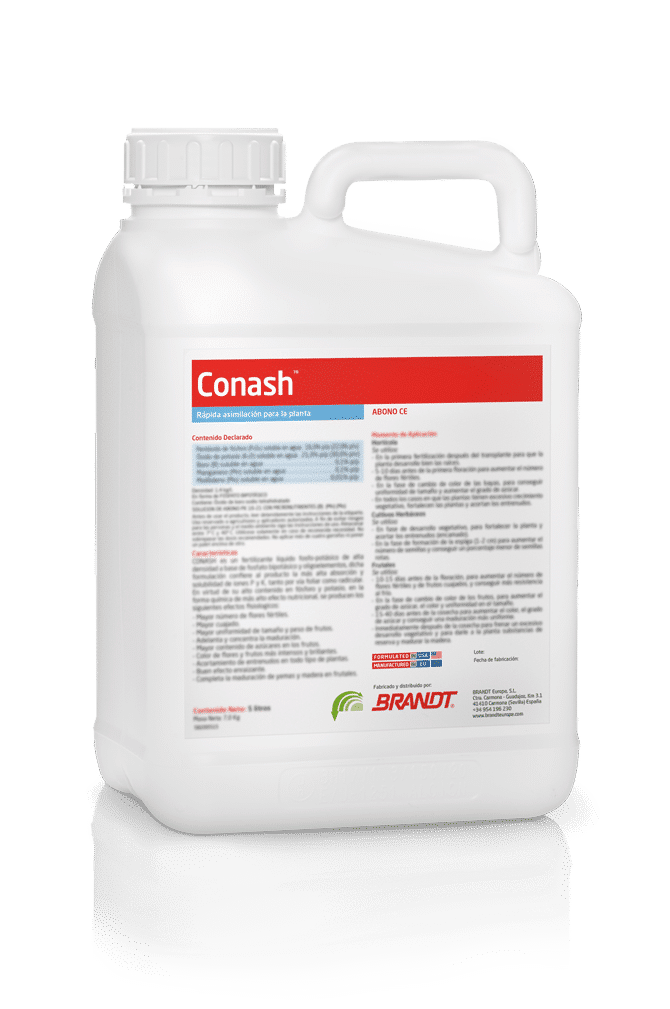Conash

- Advantages
- Crops
- Applications and use
- Nutritional Composition
- Sheets
Advantages
- Increased number of fertile flowers.
- Greater fruit set.
- Greater uniformity of fruit size and weight.
- Earlier and more concentrated ripening.
- Higher sugar content in the fruit.
- More intense and brighter colour of flowers and fruit
- Shortening of internodes in all types of plants.
- Good rooting effect.
- Completes the ripening of buds and wood in fruit trees.
Crops
Applications and use
Fruit trees: stone, pip and citrus fruits
2-4 applications of 200-400 cc/hl from swollen bud to petal fall or flowering.
Repeat treatment throughout the crop cycle.
Table grapes
2 applications in irrigation at 20 l/ha or foliar 250-300 cc/hl 2-3 times.
Open field horticultural crops
15- 20 l/ha at the beginning of the crop and foliar applications at 250-300 cc/hl in pre-flowering.
Potato
Before the beginning of tuberisation, 250-300 cc/hl. Once tuberisation has started, 250-300 cc/hl.
Strawberry
Applications at 250 cc/hl to promote flowering and rooting.
Horticultural greenhouse crops
1-3 fertigation applications at 3-5 liters/1,000 m2.
Horticultural crops
It acts as a growth regulator preventing vigorous growth (excessive), making the flowers more resistant and more fertile, increased fruit set and, in the end, with increased specific weight and increased quality, colour and size of the fruit.
1-3 fertigation applications at 3-5 liters/1,000 m2.
Olive trees
Applied before flowering it increases fruit set, after fruit set it increases the size of the olive and gives it more resistance to drought, in autumn it favours the lignification of the shoots, enhancing flowering.
In foliar applications 250-450 cc/hl 15-20 days before each stage.
Herbaceous crops
It is used:
In vegetative development phase, to strengthen the plant and shorten internodes (lodging). 250-300 cc/hl. In the ear formation phase (1-2 cm) to increase the number of seeds and achieve a lower percentage of broken seeds. 250-300 cc /hl.
